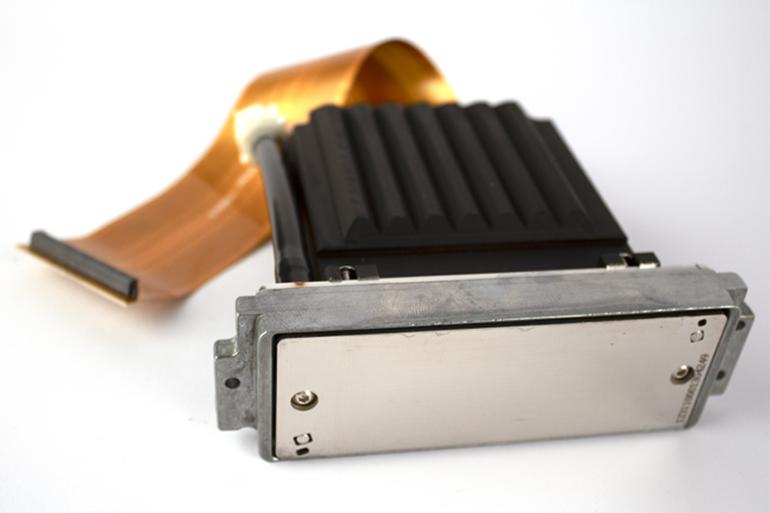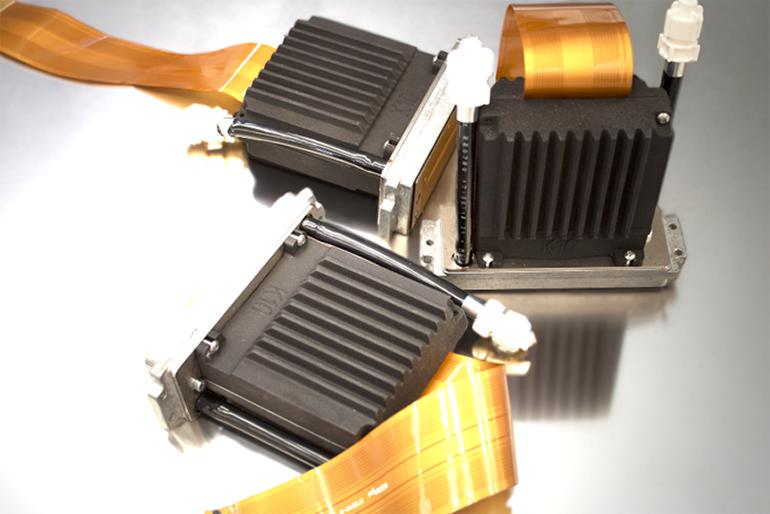KERAjet celebrates a quarter of a century of inkjet innovation
Among its latest innovations, which will be presented at next TECA 2024 in Rimini, the Spanish company has launched the K10 piezoelectric printhead for selective digital glazing.
Ever since it introduced the first inkjet-printed tile to the market back in 1998, KERAjet has continued to innovate in the field of digital glazing and decoration of ceramic surfaces. The company has garnered international recognition for its dedication, commitment and vision and has established itself as a pioneer in revolutionising the production process and as a leader in research and development of ever more advanced solutions.
Throughout its 26-year history, the company has based its development on two key principles. The first is the continuous acquisition of know-how in the field of digital decoration, further enhanced by skills developed across a range of industrial sectors such as textiles, glass, heavy clay, tableware and UV. The second is the decision to evolve as a vertically integrated company that designs and produces all its technologies in-house, from mechanical machining to the development of electronics and software, while at the same time investigating the chemical and physical properties of inks and glazes. This approach is driven by a desire to optimise every aspect of machines, making them more efficient in terms of productivity and energy use while delivering greater speed and flexibility and improved all-round customer support.
The company is headquartered on a 177,000 sqm site in Castellón, including a 75,000 sqm roofed area with a 7,000 sqm pilot tile production line and a 5,000 sqm multi-sector demo centre to support R&D, an activity to which the company devotes about 20% of its annual revenue. Thanks to the joint efforts of the company’s subsidiaries in Italy, Portugal, Mexico, China, Brazil and India, by the end of 2022 a total of around 4,000 KERAjet printers were in operation in 44 countries worldwide.
The K10 piezoelectric printhead for selective digital glazing
The company’s vertical integration strategy has led to the development of a range of printheads designed and produced entirely in-house. These printheads are extremely durable and compatible with all types of ink chemistry, and feature an efficient recirculation system that ensures uniform print quality across the entire printing line.
The existing K8 and K9 models have now been joined by the latest high-performance K10 version, which represents a significant breakthrough in selective or full-field digital glazing. The result of years of research and a total investment of around €30 million, the K10 piezoelectric printhead allows for a high discharge (up to 200 g/sqm) of materials with particle sizes of up to 8 microns, a 600 dpi resolution, 16 grey levels, a jetting frequency of up to 100 kHz and a drop volume of 15 pL (S).
It is compatible with all types of digitally jettable fluids (solvent-based, water-based, UV) and ideal for a wide range of applications (glazes, protective treatments, glues and water-repellent coatings).
The K10 printhead offers numerous advantages. Its ability to use inks with a particle size of up to 8 microns allows for precise and versatile selective glazing, lowering costs and providing manufacturers with greater creative freedom.
In addition, the printhead’s advanced construction technology features a piezoelectric actuator inside the nozzle plate, which allows for operation at higher temperatures than normal (up to 115-130°C) and further expands its range of applications.
Of course, the use of digital glazing technology offers many other advantages, including increased overall plant efficiency and improved production management. It eliminates ink or glaze wastage by utilising only the necessary quantities and eliminates the need for extraction equipment, unlike in airless glazing processes. Furthermore, it reduces the need for manual operations, decreasing risks for operators and enhancing both safety and reliability within the production process.

Electronics
Alongside the printheads, electronics is another key area in which KERAjet focuses its research activities when developing the full digital Re-Krea line. The goals include perfect synchronisation between the machines, greater speed and maximum precision even in the event of tile misalignment.
Optical centring is performed by the VISIO IC (Input Control) vision system installed on each printer, which detects size, shape and angle of rotation and recognises 3D images and structures. After an initial digital application of a water-repellent coating, a QR code is printed on the underside of each tile. This code is subsequently re-read as the tile advances along the production line, subsequent to the glazing process and prior to digital decoration. If adjustments are necessary, the system recalculates and realigns the printheads in real time to ensure precise application. At the end of the digital decorating process, the VISIO QC system performs a final quality check to identify any printing defects.
KERAjet’s electronics are based on a distributed and flexible electronic control system. This centres around a single, extremely robust and powerful electronic board which is used to control every printer subsystem: printheads, transport system, ink recirculation system, I/O synchronisation, VISIO IC and QC system and LED/IR lamps. The system is highly flexible because the control and calculation speed is entirely independent of the size of the printer and the number of printheads installed.
The CA5x electronic board, designed, developed and manufactured by KERAjet in Spain with proprietary firmware, is a complete and autonomous micro-computer with a memory capacity capable of handling up to 500 linear metres of graphics and supporting continuous design uploads online without any restrictions on graphics size.
Not just Inkjet
The KERAjet brand’s evolution in the last 2-3 years has continued in parallel with its activity in industrial sectors such as textiles and UV, enabling it to develop more advanced printing solutions to meet the needs of high-end and very high-end ceramic production.
At the same time, the company has expanded its R&D efforts in the field of tile pressing and firing technologies, developing the KERApress laminating press and the Faraday 2.2 electric kiln.

Did you find this article useful?
Join the CWW community to receive the most important news from the global ceramic industry every two weeks




















